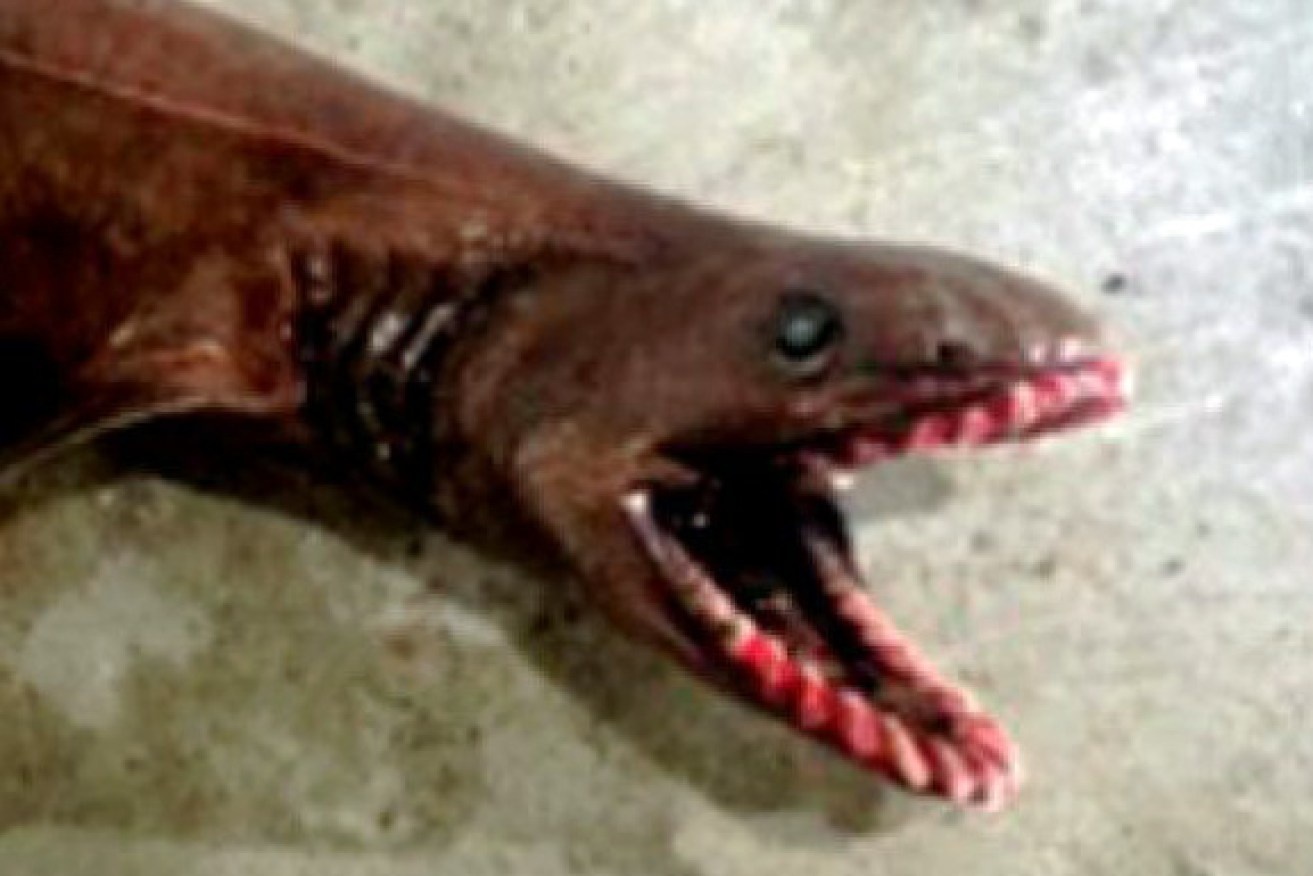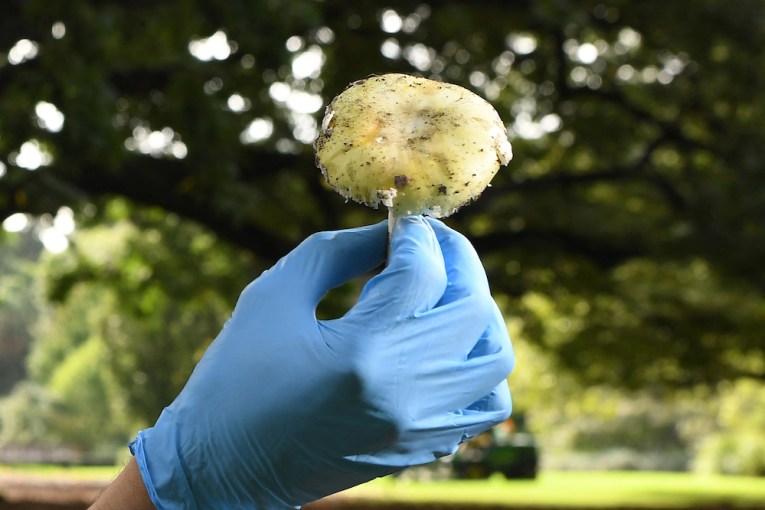‘Horrific’ shark killed by trawler near Victoria

A threatened species of prehistoric creature resembling a shark-eel hybrid has been caught and killed by a trawler off the south-east coast of Victoria.
The 1.5-metre long shark was accidentally pulled from the ocean by the crew of trawler Western Alliance last month among a catch of dory and sea perch.
Skipper David Guillot told Fairfax Radio he had never seen anything like it in his 30 years of fishing.
• Beaches shut for fear of ‘monster’ shark
• Should we be killing sharks?
• Boy bitten by shark in WA
“The head on it was like something out of a horror movie. It was quite horrific looking … It was quite scary actually,” Mr Guillot said.
CSIRO shark expert William White told The New Daily that the species is one of the oldest living sharks, and has “prehistoric” teeth and gills that set it apart from modern sharks.

Frilled sharks, such as this one killed by a deep sea trawler, are considered ‘prehistoric’.
“It’s called a frilled shark, which is to do with the really huge gill slits on the side, which almost join on the underside, giving it a really frilled appearance.
“They’ve also got six gill slits on each side, whereas almost all sharks only have five.”
Its mouth bristles with approximately 300 sharp teeth that are presumed to latch onto soft prey such as squid, octopuses and small fish that are then swallowed whole, although there is little hard evidence of its eating habits.
South East Trawl Fishing Association spokesperson Simon Boag told local media that it was the first time a frilled shark had been caught in living local memory.
“We couldn’t find a fisherman who had ever seen one before,” Mr Boag said.
“It looks prehistoric, it looks like it’s from another time.”
The IUCN Red List of Threatened Species has listed the shark as “near threatened”, and has expressed “some concern” that more and more specimens will be accidentally caught as deepwater fishing expands around the world.
The trawler was not at fault for catching the shark, said expert William White.
“A lot of them do come up to the surface at night following prey. If the trawlers are operating in the area where that sort of movement is happening, then you’re going to get that kind of thing coming up every now and then,” Mr White said.
But killing even one of these rare sharks may have disastrous consequences for local populations because it is thought that the females carry their young for up to three-and-a-half years.
Its scientific name Chlamydoselachus anguineus, which literally means ‘snake-like frilly shark’, may be no coincidence. Scientists have suggested that it may hover in the water like a viper and use its rear fins to strike forward at its prey with its razor-sharp ‘fangs’.
The shark can grow up to a maximum length of two metres and has previously been caught off the coast of NSW and Tasmania. It can also be found in deep waters off England, Ireland, Japan and Norway.
Old legends of sea serpents are thought to have been inspired by the creature or a close relative.
Describing the strange beast in 1884, American scientist Samuel Garman said it reminded him of the “most dreaded snakes”.
He even suggested that it might be “that oft-appearing but elusive creature, the serpent-like monster of the oceans”.








